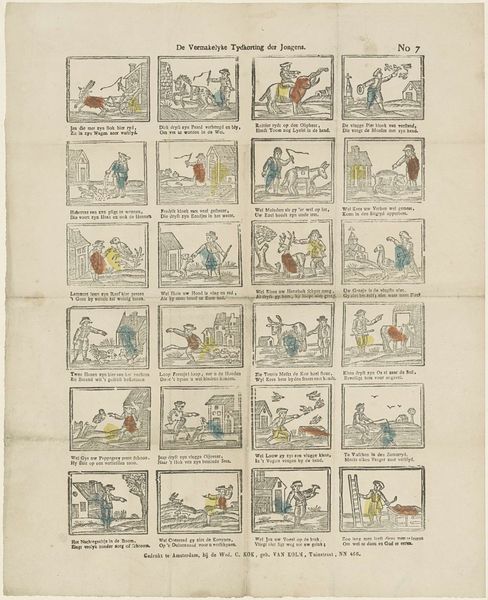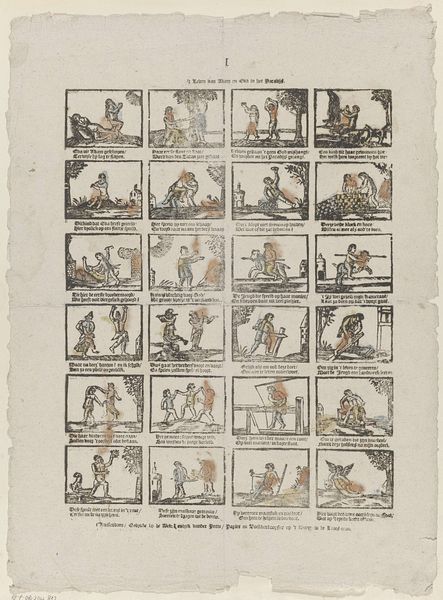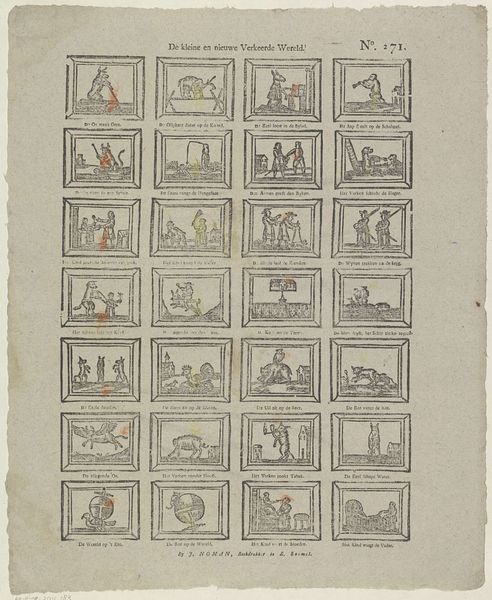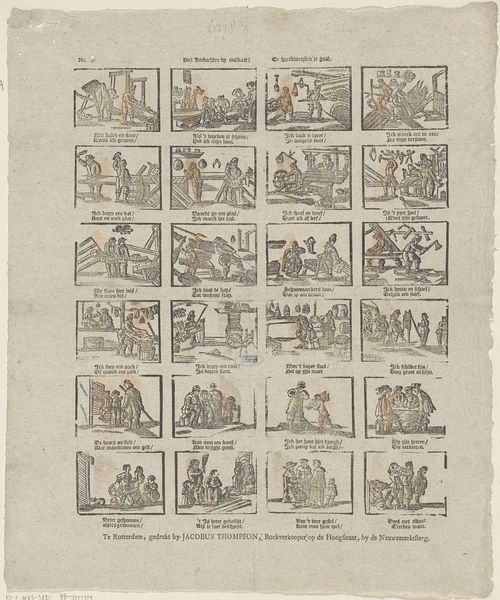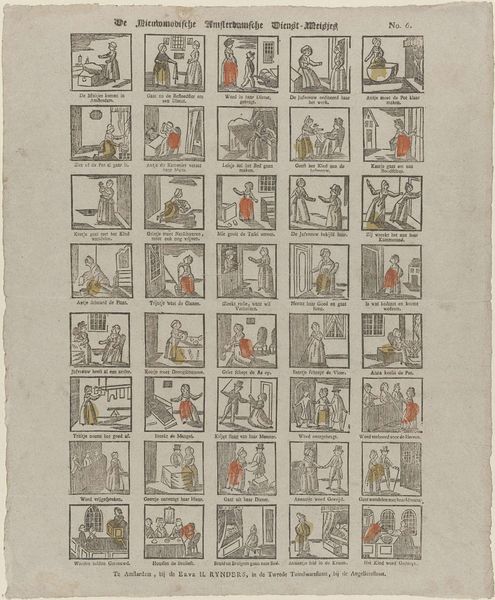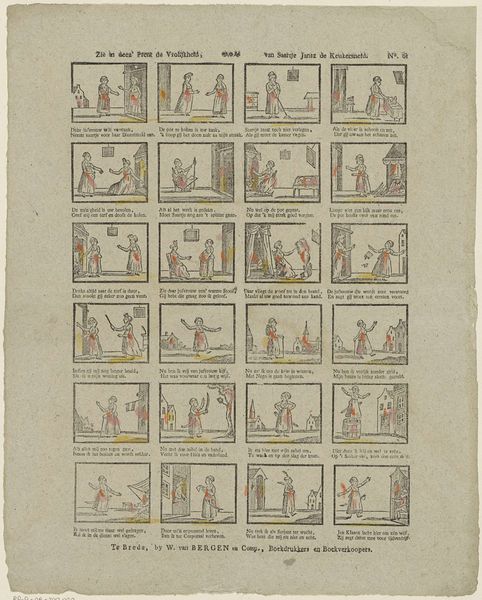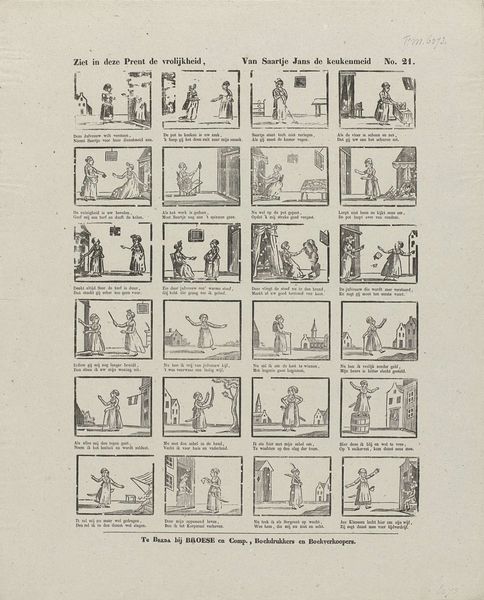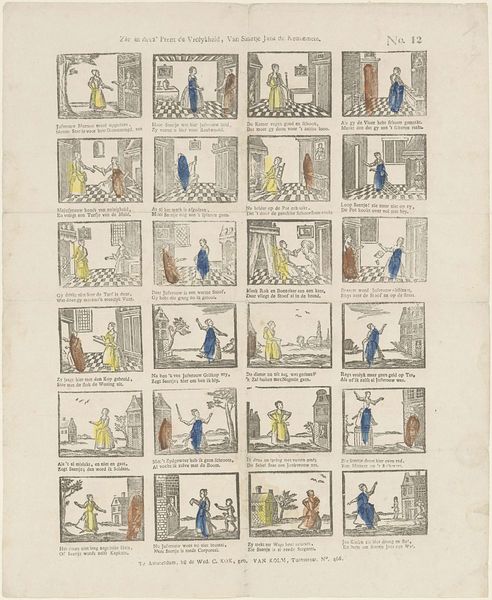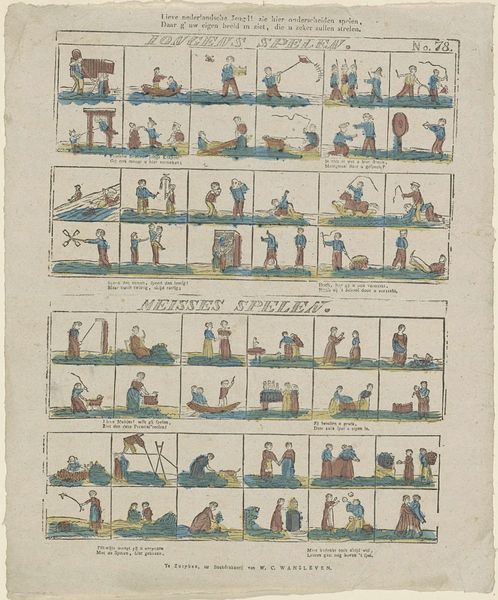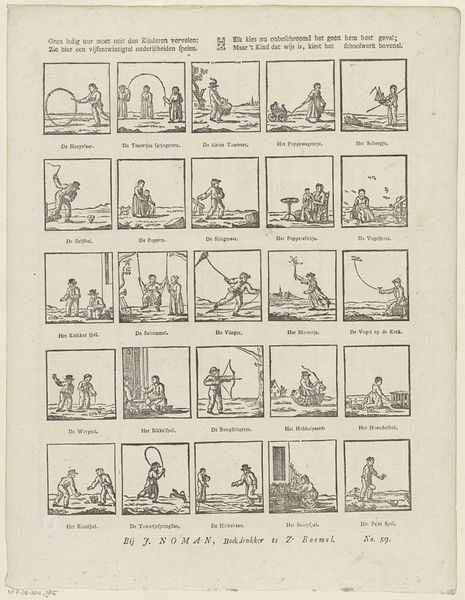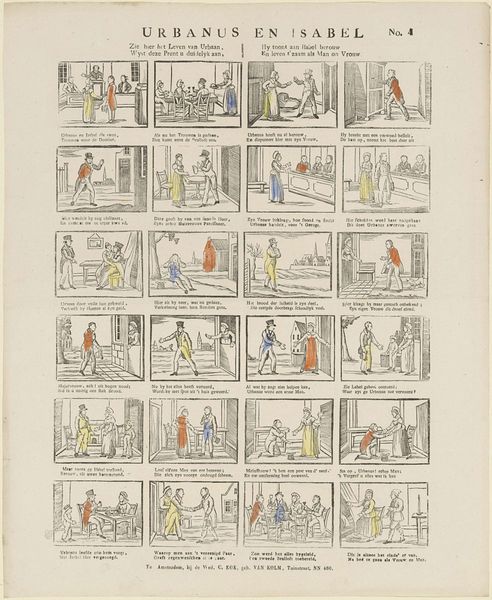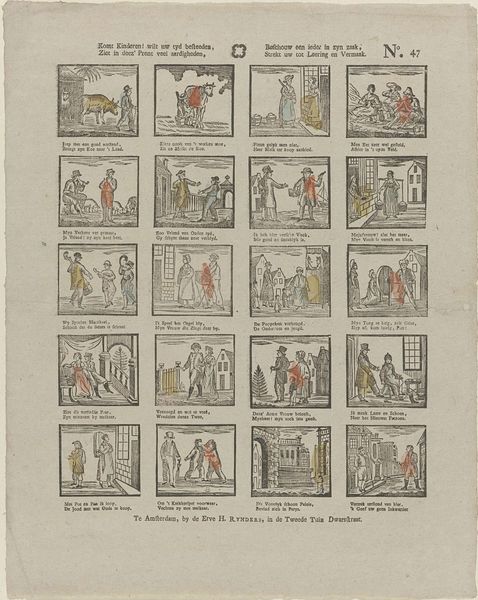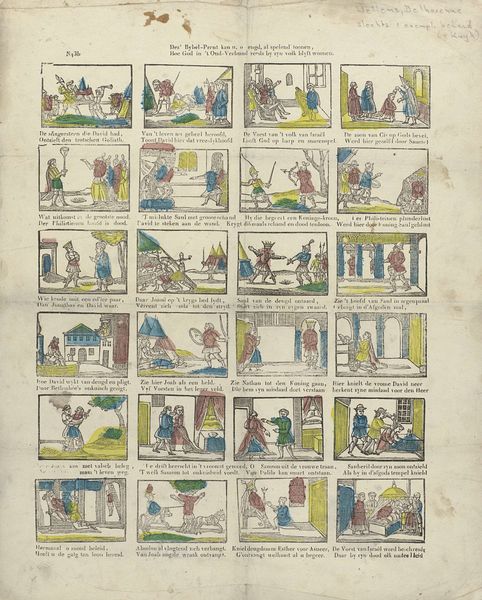
Elk jaargety, ô lieve jeugd. / Schenkt somtyds ons vermaak en vreugd 1842 - 1866
0:00
0:00
graphic-art, print, engraving
#
graphic-art
#
comic strip sketch
#
narrative-art
# print
#
old engraving style
#
personal sketchbook
#
sketchwork
#
ink drawing experimentation
#
folk-art
#
pen-ink sketch
#
pen work
#
sketchbook drawing
#
genre-painting
#
storyboard and sketchbook work
#
sketchbook art
#
engraving
#
miniature
Dimensions: height 397 mm, width 329 mm
Copyright: Rijks Museum: Open Domain
Curator: This delightful little piece, entitled "Elk jaargety, ô lieve jeugd. / Schenkt somtyds ons vermaak en vreugd," was created sometime between 1842 and 1866. It's an engraving by the widow C. Kok-van Kolm, held here at the Rijksmuseum. What are your initial thoughts? Editor: It reminds me of a storyboard or maybe an early comic strip. Each little scene feels like a frozen moment in a larger narrative. There's a quaint, folksy charm to it. Curator: Absolutely. Each panel presents a different scene, capturing snippets of everyday life and leisure activities, possibly intended to chronicle a Dutch family across the seasons. It's folk art in miniature. Do you notice any particular symbol resonating? Editor: Well, the figures are stylistically rendered in the fashion of folk-art illustration, each scene appearing universally familiar yet somewhat aloof through the old engraving style. And I read it to celebrate folk’s innocent freedom as reflected in the various panels. I mean it seems aimed to offer children both "vermaak" and "vreugd", "delight and joy". Curator: And yet, the seeming randomness, at least to modern eyes, might mask a structured, didactic scheme or symbolic allegory that would resonate with a 19th-century viewer, the artist maybe offering the youth something more than innocent pleasure. Editor: That’s certainly plausible. I find myself wondering how an artist like weduwe Kok-van Kolm, now a widow, would decide what moments to showcase. Perhaps she saw herself as both celebrating youthful pleasure while offering a gentle, coded roadmap to social responsibility? Curator: That's a beautiful consideration of her intentions. The arrangement could serve as a guide or reminder of how to behave, but how delightful to imagine art with moral intention can give people a free ticket to the museum today. Editor: True! Though art’s public role always morphs with time. These panels offer a beguiling look into the domestic ideals and recreational practices of a specific time and place. I’m very happy that we were given time to discuss. Curator: I agree wholeheartedly. Thinking about these vignettes and their place within the larger fabric of Dutch culture enriches my experience.
Comments
No comments
Be the first to comment and join the conversation on the ultimate creative platform.
